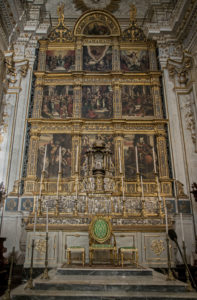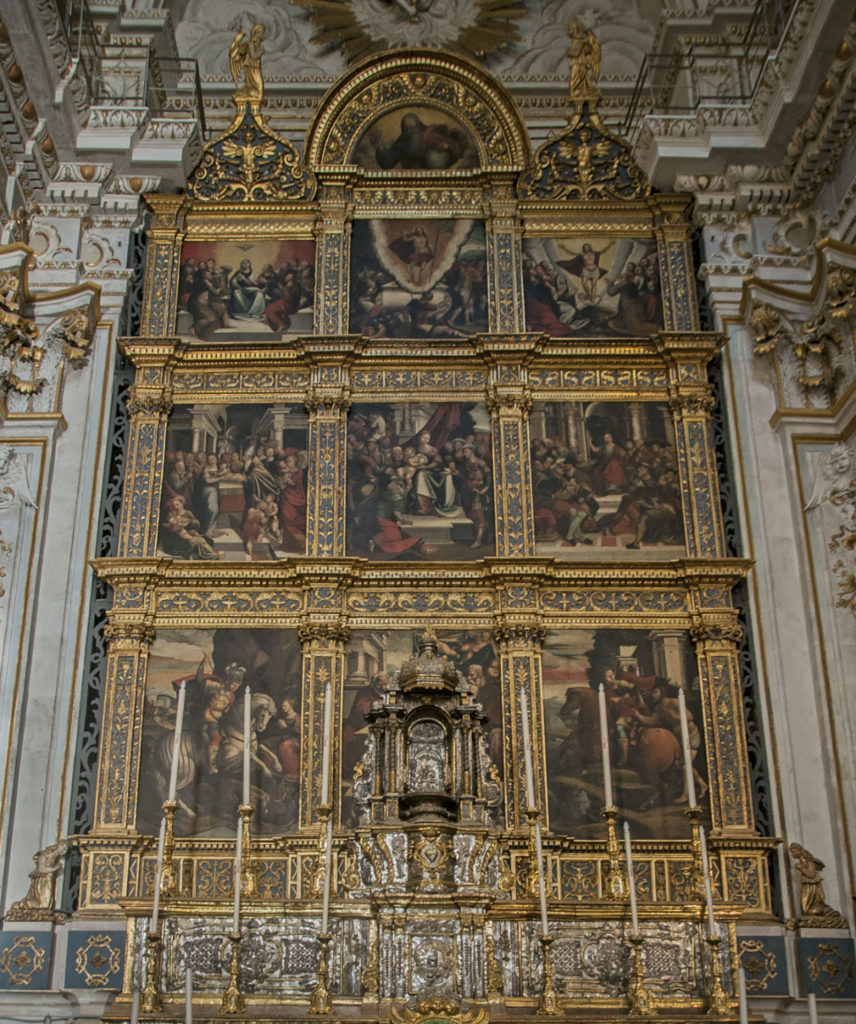
The Cathedral of Modica is one of the richest and most complete buildings, not only from an architectural point of view, but also for the large number of works it houses inside.
The highly precious altars, in addition to the main one decorated with silverware and artwork of singular beauty, include the grandiose and spectacular
polyptych
placed on the back wall of the central
apse
also known to be the largest in the region.
The wooden work is composed of ten colourful panels depicting the life of Christ, made by Bernardino Nigro in 1573.


 In the left nave of the cathedral, you can admire the magnificent organ with four keyboards, eighty stops and three thousand pipes.
In the left nave of the cathedral, you can admire the magnificent organ with four keyboards, eighty stops and three thousand pipes.
Still working today, it was built between 1885 and 1888 by Casimiro Allieri from Bergamo.
Inside the church, there are some works dedicated to the patron saint.
In the chapel on the right, the central apse houses the equestrian statue of St. George, which is carried in procession during the feast, and in the side nave there is the Holy Ark, or the Arca Santa, which contains a relic of the patron saint inside an urn considered one of the most beautiful items of Italian goldsmithing.